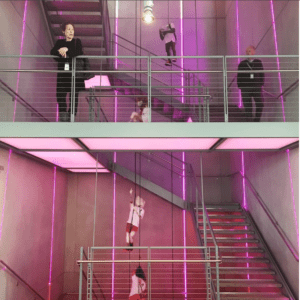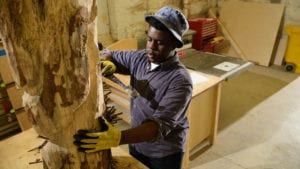New York-based artist Hali Linn Whelan’s large-scale paintings are born of a long-running investigation into women and their personal histories. Working with feminism and real women, Whelan’s work draws on narratives of sexuality and trauma, a subject which had been previously dismissed, now brought into the open in this series of works at Bushwick-based Image Gallery, aptly named ‘Pardon Me’.
Art Zealous went along to meet the artist and discuss her ideas.
Art Zealous: Can you tell us a little bit about the subjects of the paintings?
Hali Linn Whelan: The works are a series of portraits of real women in their early twenties, who tended to play down their age. The paintings address female histories, what it is to grow up and navigate girlhood into womanhood. They’re about how women present themselves, how they address being looked at or being defined as an object at the same time as owning their sexuality and defining themselves.
AZ: How did the work come about around these women?
HLW: As the work developed it became more apparent that every woman goes through some kind of shit that comes from navigating the world of being a woman, which kind of sucks. That’s the point where the work became a space for those conversations – the whole are is shrouded in secrecy, it’s something that people live with, these histories that people carry as a burden. This body of work allowed space for all of that, for the individual women but also for women who are also accessing that narrative.
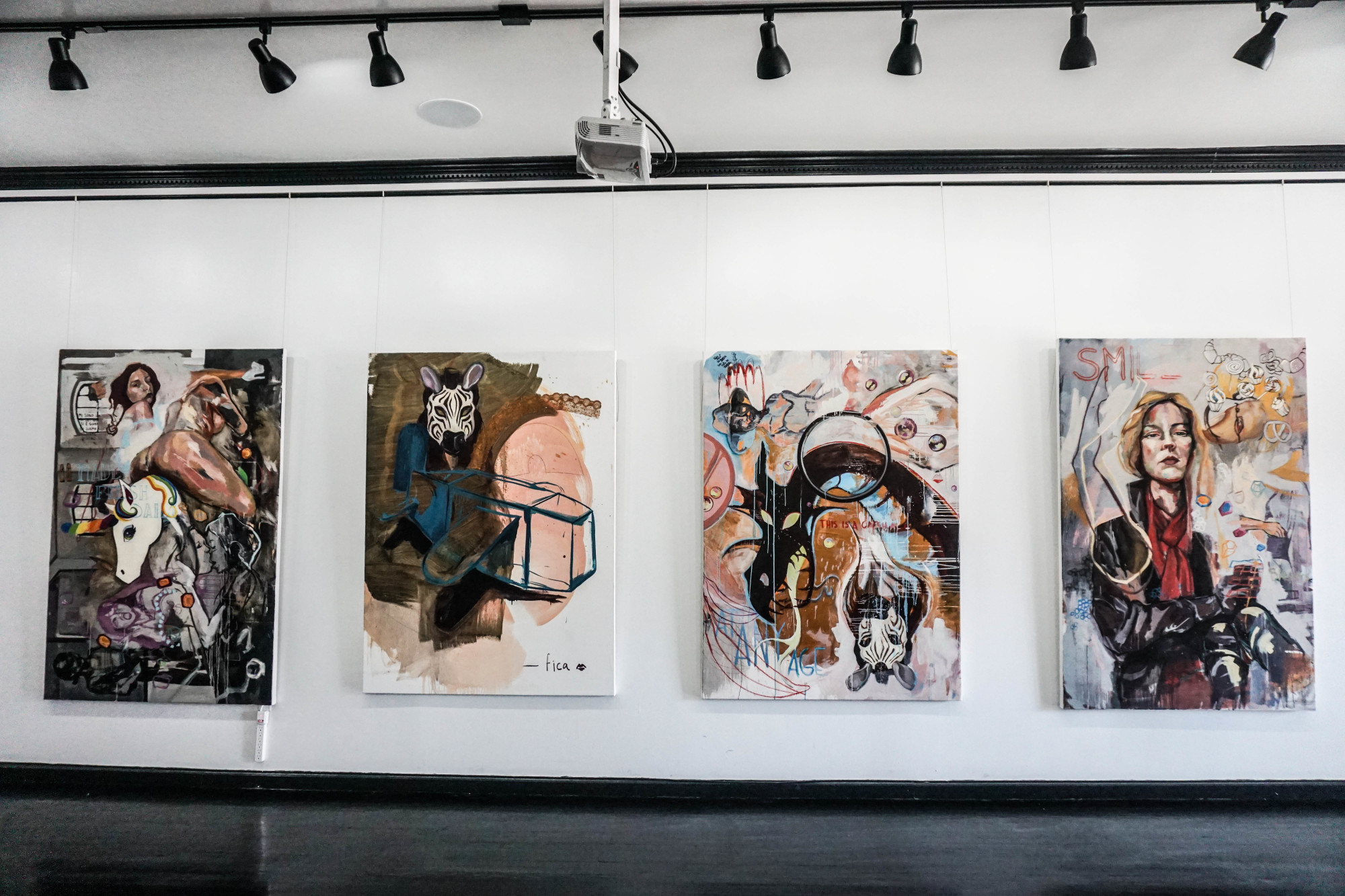
AZ: Are there any specific examples used in the works?
HLW: I started having conversations with this particular woman about street harassment and what a rich topic that can be – what it means to walk down the street and have someone address your personhood in a way that robs it, even if it’s as simple as someone telling you to smile… I don’t think that’s something that should be expected of me! I feel like we can have these conversations now whereas 5 or 10 years ago it wasn’t a topic people could talk openly about. The more I explored social expectations and the more I painted specific women, the more these stories of sexual trauma kept coming up and people would come and tell me their experiences, which was so profound and goes beyond the work itself.
AZ: What’s the story behind the motifs like the cupcake and the pretzels?
HLW: For me, they speak to being young and childlike. I think that’s almost where the colors come from – they’re sort of girly, playful visuals, but they’re dark too. This content isn’t necessarily light and girly. They’re ironic but without poking too much fun – these visuals sort of recur in my mind, I collect different imagery, and these things keep cropping up in my paintings. The visual objects play with the idea of what women are expected to be, versus what they would be without those expectations.
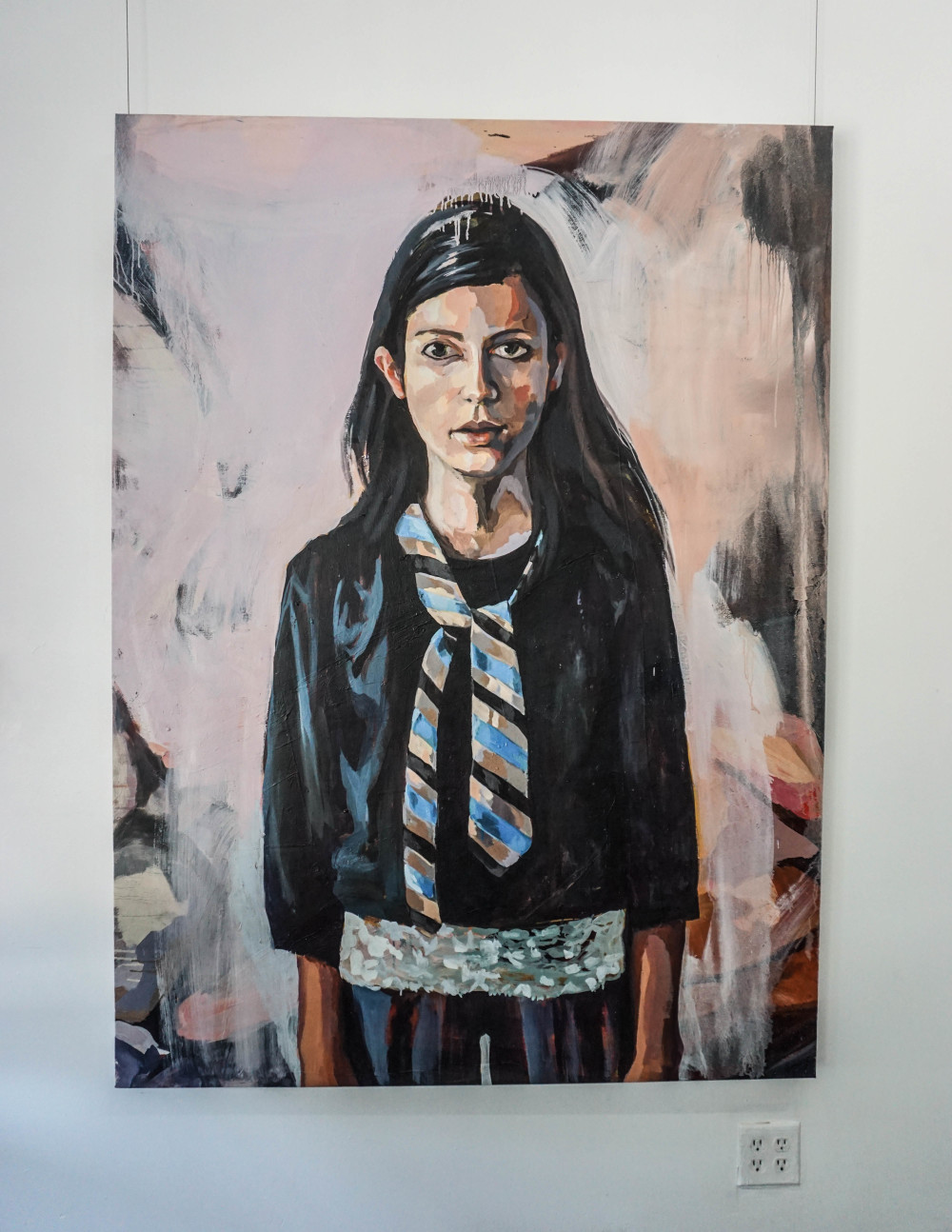
AZ: Why are the portraits painted from the thigh upwards?
HLW: They also don’t have any hands! Historically speaking if you look at paintings throughout the centuries, men’s hands are huge and powerful and active, and women’s hands are passive and put away. It’s really because of magazine covers where the models don’t have any legs. A lot of my paintings are based on a spin on the classic magazine cover, representing a darker side. Without these parts, they are somewhat exposed in a vulnerable way, as well as almost confrontational and confident way.
AZ: What has been the response you get from men?
To ask the average dude to analyze and invest in this subject matter can be prickly. There are people who are genuinely interested, like my husband, who are completely passionate and supportive and recognize that they don’t ‘get’ the experience but want to know more. It’s so interesting to see how a lot of men will put up a fight in certain ways and be reluctant to get on board.
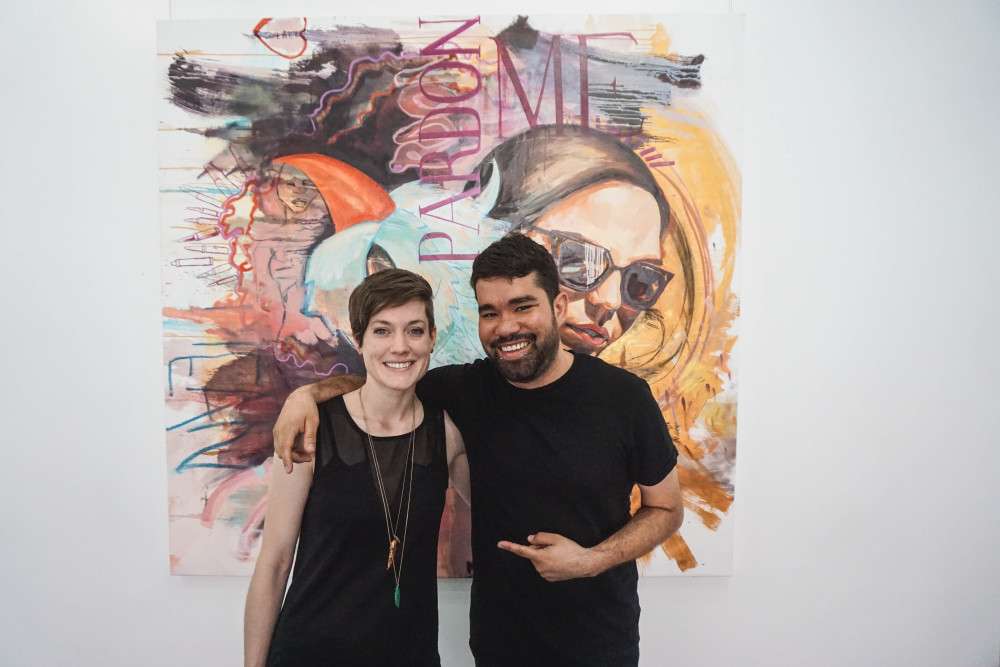
Photos // Hanna Hazel


